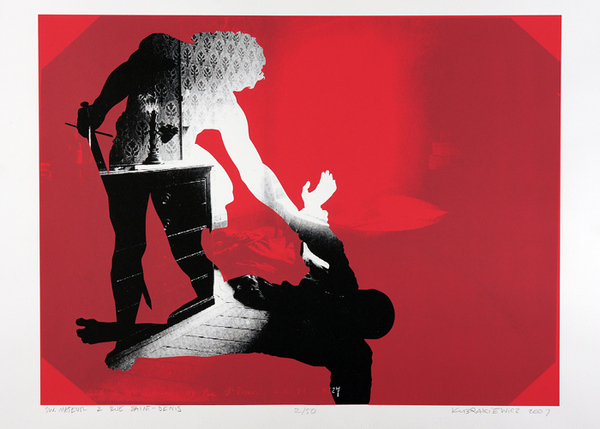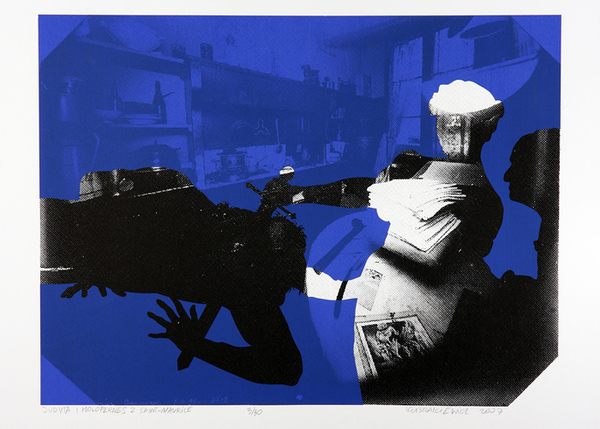Making your own impression of some masterpiece is an homage to its author. It’s also a borrowing motifs from other artists that we admire and esteem. Beside admiration there is also a rivalry. It is hard to imagine how does someone who lives today can compete with Caravaggio but for me the most important thing is that tradition of art can be inexhaustible source of inspiration, as well as many other visual impulses of everyday life such as advertising, photographs in magazines. In fact, every picture that depicts something unusual can be fascinating and inspiring for me.
Saint Matthew of Rue Saint-Denis and the other prints from this series are some kind of crime reconstruction. It is not just a remake. Dramatic moments painted by Caravaggio were moved to real crime scenes of XIX century Paris. I was using authentic crime scene photographs made at the very beginnings of forensic photography. On these magnified black and white pictures with characteristic big halftone dots I’ve printed color foregrounds with human silhouettes being cut out. The lack of human figures in this dramatic scene is equal for me with absence of emotions. We are no longer a witnesses, we can only see the results of something that happened before. It is like watching a show from the moment when the most important player has left the stage. The advantage is that we can see all the other actors, elements and decorations. Doing something without emotions we are more conscious.
Saint Matthew of Rue Saint-Denis and the other prints from this series are some kind of crime reconstruction. It is not just a remake. Dramatic moments painted by Caravaggio were moved to real crime scenes of XIX century Paris. I was using authentic crime scene photographs made at the very beginnings of forensic photography. On these magnified black and white pictures with characteristic big halftone dots I’ve printed color foregrounds with human silhouettes being cut out. The lack of human figures in this dramatic scene is equal for me with absence of emotions. We are no longer a witnesses, we can only see the results of something that happened before. It is like watching a show from the moment when the most important player has left the stage. The advantage is that we can see all the other actors, elements and decorations. Doing something without emotions we are more conscious.

Saint Matthew of Due Saint-Denis, silkscreen, 60x80 cm (100x70 cm paper size), 2007, Fabriano paper

John the Baptist of Avenue de Wagram, silkscreen, 60x80 cm (100x70 cm paper size), 2007, Fabriano paper

Judith and Holofernes of Saint-Maurice, silkscreen, 60x80 cm (100x70 cm paper size), 2007, Fabriano paper
